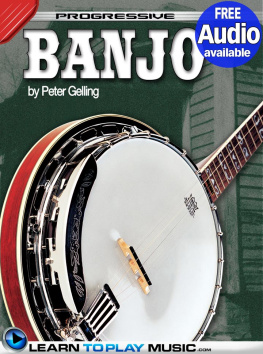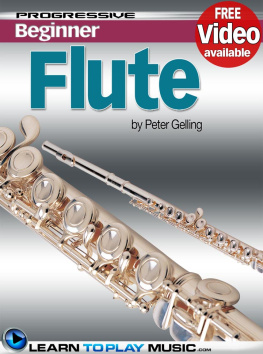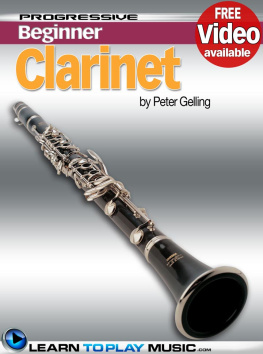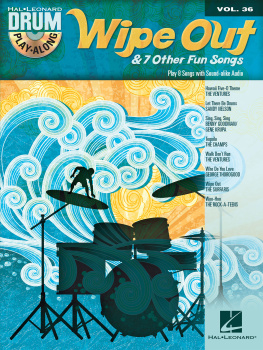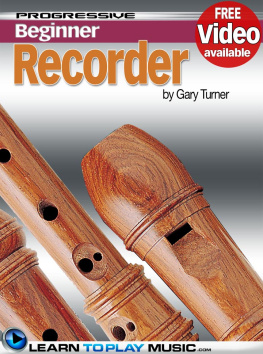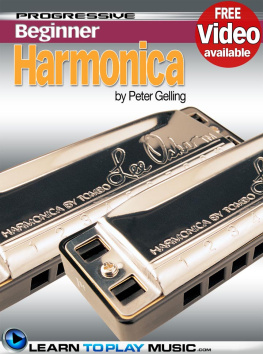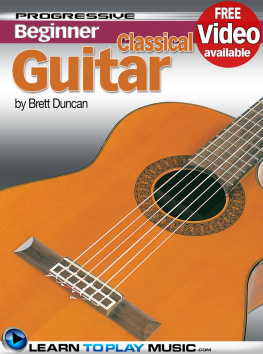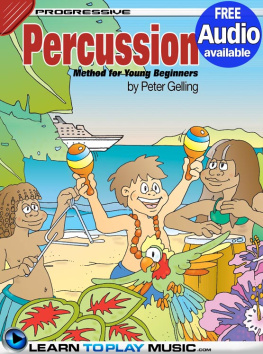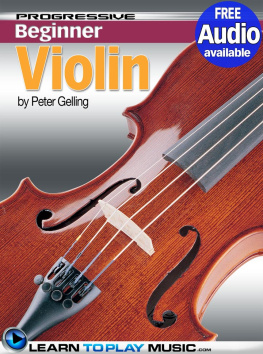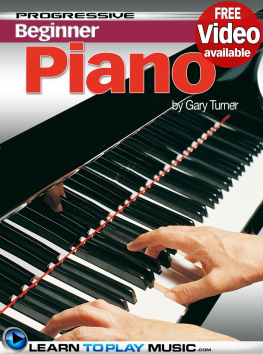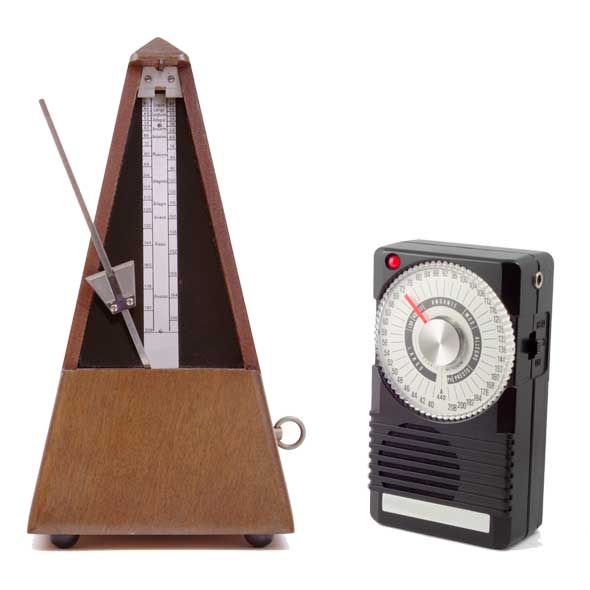Progressive Beginner Drums
by LearnToPlayMusic.com and Peter Gelling
Published by LearnToPlayMusic.com
ISBN: 978-982-532-005-0
2013 L.T.P. Publishing Pty Ltd
No part of this product can be reproduced in any form without the written consent of the copyright owner.
LTP Learn To Play MusicTM
LearnToPlayMusic.com has a huge selection of music education books, eBooks and apps covering many instruments, genres and playing styles.

Visit our Website:
learntoplaymusic.com

Like us on Facebook:
LearnToPlayMusic

Follow us on Twitter:
LTPMusic

Email us:
Free Video/Audio Available

Click or tap here to access the FREE video/audio content for this book.
If you are having trouble with this, copy the following link into any web browser:
signup.learntoplaymusic.com/freemedia
Enter this book code into the form:
69165

This title is also available as a printed book, with CD, DVD and DVD-ROM (where available), and can be purchased through our website:
learntoplaymusic.com
Using This eBook
Our eBooks contain many photos, diagrams and music scores to provide a rich learning experience but this can push the capabilities of some eBook reading devices. To get the most from this eBook, please note:
- For the best reading experience on your device, please refer to our recommended eBook settings webpage: http://ebooks.learntoplaymusic.com/settings.html
- Should you experience difficulties playing the free audio or video content (available for selected titles) please use an alternative device, such as a Windows or Mac personal computer;
- While this eBook can be viewed on smartphones, it has been optimized for the latest color tablet devices;
- If you use a black and white eBook reader, you can view it in color on a personal computer (for more information follow the link above).
If you like this eBook, please post a review at the eBook store, telling us what you liked the most. For any questions, comments or suggestions, email us at .

INTRODUCTION
Progressive Beginner Drums assumes that you have little or no prior knowledge of music or playing the drums. This book begins with learning the parts of the drumkit, how to sit at the drums and how to hold the drum sticks. You are also introduced to:
- Reading and understanding music as it relates to the drums.
- Learning to play using all the drums and cymbals around the entire drum kit and gaining control of all four limbs.
- Playing drum beats in a variety of styles including Rock, Blues, Funk and Jazz.
- How to invent your own drum beats and fills.
- How to make your drum parts work with other instruments, in particular the bass and guitar.
After completing this book you will have a solid basic understanding of the drums and will be ready to move on to more advanced study of specific musical styles. All drummers should know all of the basic information contained in this book.
The best and fastest way to learn is to use this book in conjunction with:
- Practicing and playing with other musicians. It is surprising how good a basic drums/bass/guitar combination can sound, even when playing easy music.
- In the early stages it is helpful to have the guidance of an experienced teacher. This will help you maintain a steady practice schedule and obtain weekly goals.
- To be sure to develop a good sense of time right from the beginning, it is essential that you always practice with a metronome or drum machine. If you choose to use a metronome, use an electronic one with a volume control and earphones input, as an old style metronome will not be loud enough to hear when you are playing.
Using a Metronome
A metronome is a device that plays a continuous beat. It is used to help control your timing so that you do not rush or slow down. The beat is heard as a ticking or beeping sound and the speed can be adjusted. The speed of the beat, which is called the tempo, is measured in beats per minute (BPM).
The accompanying photo shows a mechanical metronome and an electronic metronome.
Music is commonly written with a tempo mark to indicate what speed the piece should be played. For example, 60 BPM is represented as = 60. If learning a piece at the written tempo is difficult, try lowering the BPM of the metronome (slowing it down) until you can play evenly and in time. Then gradually speed up the metronome until you can play it at the correct speed.
LESSON ONE
Understanding the Drumkit
Before you begin playing the drums, it is important to know what the different parts of the drumkit are called. The following photo shows a common basic setup. This kit contains three tom toms, but many drummers use only two as these are probably the least necessary part of the kit. In fact, most drum parts can be played using only the snare drum, the bass drum and the hi hat cymbals, so dont worry if you have a very basic setup. The bass drum is played with the right foot and produces what is often called the "bottom end" sound of the drums. The snare drum is usually played with the left hand, but the right hand is also used for certain beats as well as playing fills.
The hi hat and ride cymbals are generally played with the right hand, but once again the left hand may be used in certain situations. The crash cymbal may be played with either hand, depending on which is most practical for each musical situation. The tom toms (toms for short) can also be played by either hand. The hi hat cymbals can also be played by the left foot while certain sounds using the open hi hats are achieved by using a combination of the right hand and the left foot. As you can see, becoming a good drummer requires the use of all four limbs. Through the course of this book you will be introduced to all of the sounds mentioned here and by the end you should be confident playing in a band in most styles of music.


